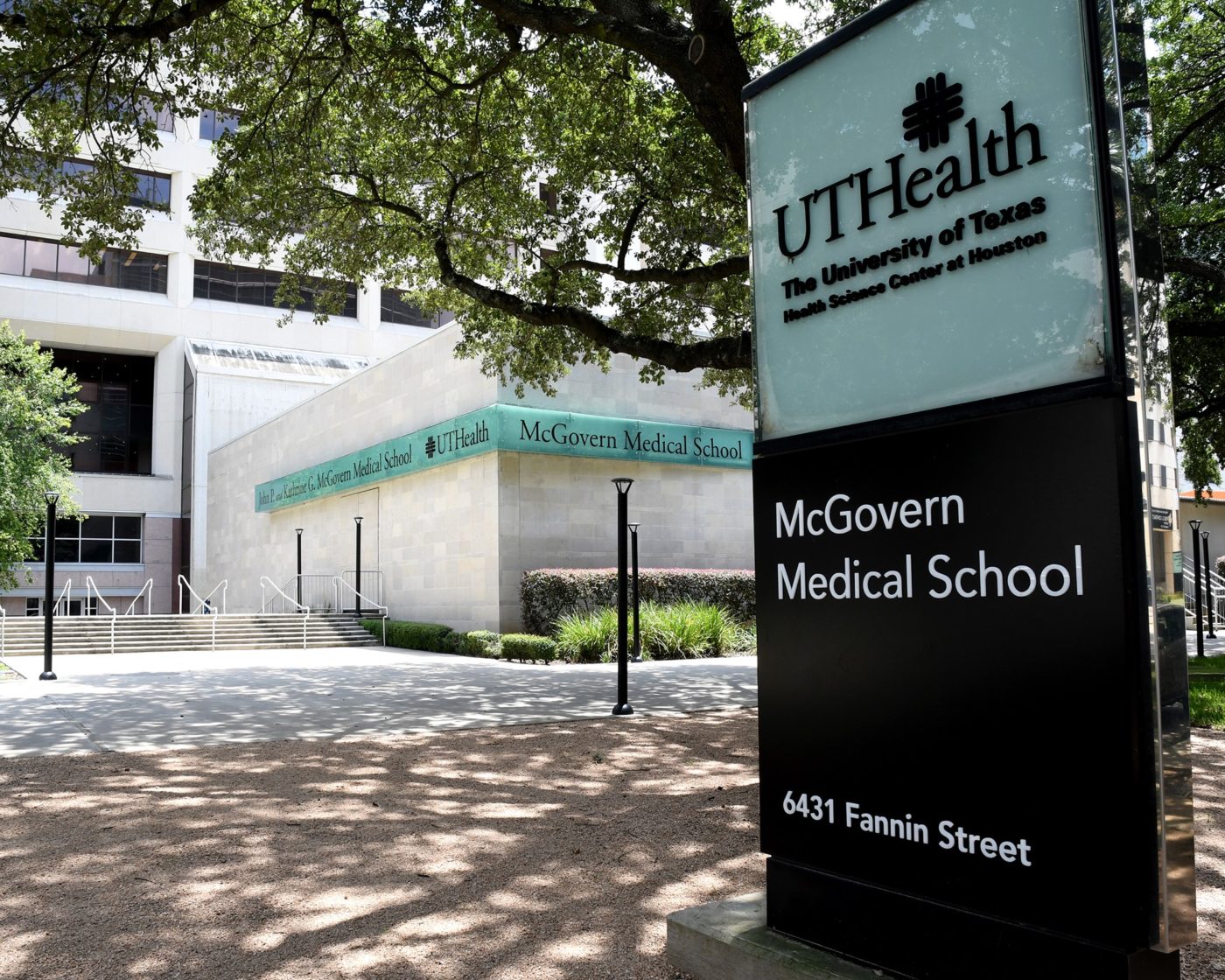Part 1: Introduction
So, you want to be a doctor. Becoming a Doctor of Medicine (M.D.) is a noble pursuit that thousands of students pursue every year. The process begins with your desire, your goal, your dream. Then you fill out the AMCAS and send in your secondary applications. The question is, where do you want to send your secondary applications? Or, in other words, what medical schools do you want to apply to?
We’re taking you through this process in our series of definitive guides on how to get into medical school. Each school we cover is broken down by its offered programs, cost of attendance, statistics, admissions requirements, secondary essay questions and interview process. We believe that the medical school admissions process is easiest when handled in bite-size chunks. So, we’re providing you with all the information you need, one medical school at a time.
In today’s guide, we’re covering the University of Texas Southwestern Medical School. Also known as UT Southwestern Medical School or UT Southwestern Medical Center, this medical school serves a dual purpose. M.D. candidates both learn and practice medicine here. The UT Southwestern Medical Center treats real-world patients who come seeking medical attention for various problems.
What UT Southwestern offers is unmatched by any other schools in the Southwest. They are partnered with five hospitals, ensuring a diverse experience for clinicals, selectives and residency. Let’s dive in and look at everything that UT Southwestern Medical School has to offer.
Part 2: Programs Offered at UT Southwestern Medical School
- Doctor of Medicine (M.D.) Degree
- Doctor of Medicine / Master of Business Administration Dual Degree
- Doctor of Medicine / Master of Public Health Dual Degree
- Doctor of Medicine / Ph.D. (Medical Scientist Training Program (MSTP))
Doctor of Medicine (M.D.) Degree
The Doctor of Medicine (M.D.) program follows the traditional pre-clerkship, clerkship and post-clerkship curriculum, followed by residency and fellowship. The M.D. program has several focal points:
- Offering students multiple learning pathways
- Having seasoned professors mentor students
- Finding new ways to teach curriculum for expanded learning benefits
- Creating individualized learning experiences
- Streamlining curriculum to eliminate repetitive information
Students can find evidence of these goals throughout their time in the UT Southwestern Medical School program. The curriculum is as follows.
Pre-Clerkship Curriculum
The pre-clerkship curriculum is broken down into the following elements:
- Academic Colleges
Skilled mentors hold weekly meetings known as academic colleges, where students come together in small groups to discuss what they are learning. These colleges allow students to review the curriculum and learn foundational materials on a deeper level than classroom instruction alone allows. - Strive
Strive is all about taking care of yourself as a student. Medical school can be strenuous and exhausting, which is why Strive exists. It’s important to focus on your mental health, physical wellness and all other elements that affect you as a student. These things will, in turn, also affect you as a doctor. What Strive teaches you as a student will benefit you throughout your career. - Body Structure Foundations
The M.D. curriculum begins with embryology, gross anatomy and microanatomy. Students learn how to perform radiological imaging and dissection with cadavers. - Fundamentals of Biomedical Sciences
Students are taught the fundamentals of:- Molecular biology
- Cell biology
- Biochemistry
- The cellular basis of physiology and neuroscience
- Genetics and immunology
- Host responses
- Macromolecule Cells, Tissues, Genetics, Introduction to Pharmacology, and Organisms and Host Responses are the courses you’ll take.
- Integrated Medicine: Health to Disease
Integrated Medicine is all about preventing disease. The following systems are studied:
- Musculoskeletal and Skin
- Hematopoietic System
- Cardiovascular
- Respiratory
- Renal and Genitourinary
- Gastrointestinal System
- Endocrinology
- Energy Homeostasis
- Reproductive Health
- Brain and Behavior
- Foundations of Clinical Reasoning
After taking all of these courses, students will learn how to apply their knowledge to patient cases.
- Transition to Clerkships
- Optional, Noncredit Electives
Upon successful completion, students will begin the Clerkship portion of their M.D. training.
Clerkship Curriculum
The clerkship phase has a similar layout to the pre-clerkship phase. It’s divided into the following sections:
- Flexibility and Personalization
This part of your clerkship lasts for 18 months, making it the longest part of the clerkship section. This is where you get to take selectives and electives that interest you. You might already know what kind of medicine you want to practice. But you might change your mind. The flexibility and personalization of your clerkship experience will help you figure this out! - Preparation for USMLE Step 1
USMLE Step 1 is a critical exam that every M.D. candidate must pass after their second year of medical school. Preparing for it and having time to study for it is very important. - Clerkships
- Faculty and Peer Mentorship
Post-Clerkship Curriculum
The post-clerkship curriculum includes the following elements.
- Growth and Exploration
This first part of your post-clerkship curriculum includes eight weeks of selectives, 18 weeks of electives and interviews for residency. You can choose between two-week and four-week electives in whatever areas you choose to study. - Frontiers in Medicine
Students will choose one of the following courses for their Post-Clerkship Curriculum. Each course lasts for four weeks. Students usually choose the course that most interests them.
- Healthy Aging
- Neoplasia and Neoplastic Disease
- Emerging Infectious Diseases and the Microbiome in the 21st Century
- Behavioral Health and Neuromedicine
- Conception, Obstetrics and Child Health
- Resuscitation Medicine
- Regenerative and Restorative Medicine
- Physicians and Society
This section of the Post-Clerkship Curriculum focuses on healthcare in society. While students learn medicine in the classroom, it’s critical to learn about the different environments in which they’ll practice medicine. That’s what Physicians and Society is all about. Multiculturalism, health economics and systems, and medicine and law are a few of the topics that are discussed. - Residency Essentials
The concluding portion of the Post-Clerkship Curriculum focuses on transitioning students as they go from student to resident, resident to fellow, and fellow to physician.
After successfully completing each phase of the M.D. curriculum and passing all the required exams, students will become practicing physicians.
Doctor of Medicine / Master of Business Administration Dual Degree
If your aspirations go beyond the white coat, you might consider a dual degree. If you want to work in business, the M.D./MBA dual degree is a great option. The same M.D. curriculum we just looked at is combined with the MBA curriculum.
If you’re interested in this dual degree, apply to the medical program first. UT Southwestern requests that students wait until their second year to apply to the MBA program. The curriculum is comprised of 53 credit hours, including 23 hours of electives. The following courses are required for all students who are accepted into the program.
- Global Business
- Marketing Management
- Information Technology for Management
- Organizational Behavior
- Strategic Management
- Business Economics
- Financial Accounting
- Financial Management
- Managerial Accounting
- Operations Management
- Statistics and Data Analysis
Students can pause their M.D. studies between their second and third year in the M.D. program to complete their MBA. Students can also work with an advisor to create a custom plan. When combined, these programs ideally take five years to complete. If you have questions about this dual-degree program, you can contact Angela Mihalic, the Dean of the Medical School, or Lisa Shatz, Assistant Dean of the MBA Programs. Their information is located at the bottom of this page.
Doctor of Medicine / Master of Public Health Dual Degree
Students interested in this dual-degree program must apply to UT Southwestern and UT Health. After you apply, keep your fingers crossed because you must be accepted to both programs. If you’re accepted into UT Southwestern Medical School, you can waive the GRE requirement for the Master of Public Health Program.
This program takes about five years to complete. The M.D. program info that’s listed in its respective section is valid for this dual degree as well. The MPH curriculum is as follows.
- Core courses (18 credits)
- Shared credits from UT Southwestern Medical School (12 credits)
- Advanced public health coursework (9 credits)
- Integrative learning experience (3 credits)
- Practicum (3 credits)
For the three-credit practicum, students have a range of options. Past students have worked with the World Health Organization, the U.S. Department of Health and Human Services in Washington, D.C., and the Office of Research on Women’s Health. Students have also worked with local organizations like Food As Medicine and the Texas Medical Association’s Fight to Eliminate Maternal Mortality.
If you have questions about this program, contact Angela Mihalic, Bijal Balasubramanian or Kent Long. Their contact information is at the bottom of this page.
Doctor of Medicine / Ph.D. (Medical Scientist Training Program (MSTP))
This dual-degree program is not for the faint of heart. Only 10-12 students are admitted each year. The program is fast-paced and demands a lot from students. Students complete the first two years of the MD program. Then, they switch to graduate school and complete their Ph.D. training. Finally, they go back to medical school and finish there.
The degree takes 7-8 years to complete. While this dual degree takes longer to complete than the first two, you’re awarded an M.D. and a Ph.D. instead of an M.D. and a master’s degree. The Medical Scientist Training Program will adequately prepare you to become a physician-scientist.
During the Ph.D. portion of your education, you’ll participate in the following curriculum.
- Choose a dissertation lab and mentor.
- Attend weekly “Works-in-Progress” seminars, where you’ll conduct research and work with other Ph.D. candidates.
- Study the techniques and strategies used to excel as a physician-scientist.
If you have questions regarding this program, reach out to Britni Favors or Vineshia Whitaker. They are both program coordinators.
Choosing between these four degree options can be challenging. After all, you have to narrow down all your interests! Keep your aspirations high, and know that it’s okay to change your mind. Once you’ve decided on what you think you want to study, check out the requirements for the University of Texas Southwestern Medical School.
Part 3: Requirements to Get In: University of Texas Southwestern Medical School
Prerequisite Courses
Before applying to UT Southwestern Medical School, make sure you’ve taken the following courses. Your application will be rejected if you haven’t met the credit hour requirements for all sections.
- Biology (14 credit hours)
– 12 lecture hours, 2 lab hours
Anatomy and Physiology
Botany
Ecology
Entomology
General Biology
Genetics
Herpetology
Immunology
Marine Biology
Microbiology
Ornithology
Parasitology
Pathophysiology
Zoology - Biochemistry (3 credit hours)
- Chemistry (12 credit hours)
– 8 hours for organic chemistry; 4 hours for inorganic chemistry
– Students must take organic chemistry courses with the word “Organic” in the title.
– Inorganic courses should include general chemistry, physical chemistry and quantitative analysis. - English (6 credit hours)
– Courses teaching English as a second language are not accepted.
– Courses teaching how to write should be taken. - Math (3 credit hours)
– College calculus or statistics should be taken.
– Preference is given to Biostatistics courses.
– No business calculus or precalculus courses may be taken to satisfy this requirement. - Physics (8 credit hours)
– Any physics-related courses are accepted.
– Students may not take science courses designated for non-science majors.
Class Statistics
For the Class of 2024
– 90% of students are Texas residents
– 46% of students are female
– 54% of students are male
– 10% of students are from Canada, China, Colombia, Mexico, Pakistan, South Korea and Venezuela
– 26.5% of students are from underrepresented minorities, including African American, Hispanic and Asian
– 235 students make up the average class size
– 3.83/4.0 is the average GPA
– 517 is the average MCAT score
– 13.9% of students are first-generation college students
– 6.9% of students already have master’s degrees
As you can see, the University of Texas Southwestern Medical School represents a highly diverse student population.
Part 4: Cost of Attendance
Texas subsidizes medical school tuition, which makes it significantly lower than most medical schools. While most public medical schools charge around $40,000 in tuition per year and most private medical schools charge upwards of $60,000 in tuition, UT Southwestern Medical School only charges $22,099 per year.
But before you get too excited, remember to factor in financial aid, housing, meals, transportation, and so forth. When you add all that in, you’re looking at around $54k per year.
UT Southwestern Medical School offers financial aid and scholarships to qualified students. Students are encouraged to apply for public and private scholarships, as well as the NHSC Scholarship Program, AAMC Loan Repayment / Forgiveness / Scholarship and Other Programs Database and Texas Medical Association Scholarship Programs. Details on these programs can be found by clicking their respective links.
Part 5: Applying to UT Southwestern Medical School
Please keep in mind that the application process described here is valid for the M.D. program. For dual-degree students, please visit the appropriate master’s degree program page for admissions requirements. Go here for the Medical Scientist Training Program admissions.
UT Southwestern is accepting applications for the 2021-2022 school year from May 1 to October 1, 2021. The interview process will begin in July. UT Southwestern utilizes a rolling admissions system, so the sooner you apply, the sooner you’ll know if you have an interview. For students unfamiliar with “rolling admissions,” this means that your application is reviewed when it’s received. Some schools use “regular admissions,” which means that all applications are reviewed together after the application period has closed. This has its benefits and drawbacks. We recommend applying as early as possible if you want to attend UT Southwestern Medical School. Otherwise, the class could fill up before you have the chance to be considered.
In addition to taking the prerequisite courses listed above, you’ll need to submit MCAT and CASPer scores. Then, you’ll submit your primary application through the Texas Medical and Dental School Application Service (TMDSAS).
Once the University of Texas Southwestern Medical School receives your application, they’ll email you a link to create an account in the UT Southwestern portal. That is where you’ll fill out your secondary application. We’ll come back to your secondary application in the next section. For now, you should know that your secondary application and all supporting documentation must be submitted by November 15th. Your supporting documents include letters of evaluation, transcripts and test scores. This date is very important since most medical schools don’t accept late applications, and late supporting documents can cause serious problems.
Part 5: Secondary Essays
While not every student enjoys writing essays, the admissions committee at UT Southwestern Medical Center expects it. It helps them get to know students on a greater level than test scores and Work and Activities. Some essays are optional, while others are required. However, unless an essay doesn’t apply to you at all, we recommend writing it. You should take every opportunity you have to show the admissions committee why they should accept you.
Here are the questions that the University of Texas Southwestern Medical School asks.
Question #1
We’ve all participated in group projects. Describe one that you were involved in that you’re very proud of. Explain why it makes you proud. Share how you accomplished it, how you handled any conflict with other group members, and anything else you find relevant. (2,500 characters, required)
If you’ve had challenging experiences with group projects, then you can almost approach this as an adversity essay. There will be lots of group projects and activities during your time in medical school, so UT Southwestern Medical Center wants to know how you handle group projects. Of course, you might have had good experiences as well. In that case, you can approach this essay through the “this is what I learned through my experience” lens.
Here’s an example.
I wanted to be an effective communicator and I love literature, so I majored in English for my undergraduate studies. In one of my senior courses, I anticipated writing a 20-page paper examining a topic in literature. Instead, the professor decided on a group project where three students would come together to write a 60-page paper. Each person was responsible for 20 pages. Fifteen of those pages would be dedicated to the student’s choice from a selection of literary topics. The other five pages would integrate the other students’ writing and make further comparisons in literature.
It was already a difficult assignment. But Professor Grover made it ten times more difficult. Not only did we have a difficult project, but we had to find topics in literature that would work together in an advanced, senior-level paper. If I recall correctly, 90% of our meetings were spent ensuring that we weren’t getting off-track in our individual work.
We all got along, and we all did our parts. That was a rare feat for a group project! The challenge was in 60 pages of individual writing coming together for the most important grade of our undergraduate studies. We overcame it by sending every five pages we wrote to each other. If anyone got off track, we were able to quickly rectify it. We overcame it by writing together in group settings and getting each others’ thoughts. When we got stuck, we read sections out loud until we found the right place to continue our analyses. Over the course of three months, we produced a project I am very proud of to this day.
While I initially resented Professor Grover for giving us a seemingly impossible assignment, I now respect her for it. She understood that an assignment of that magnitude would force us to work with each other on the same level we would need to in the work place. I’ve never taken on a project of the same magnitude in the work place, but I know I could take it on should I need to. And now that I know I want to be a doctor, I look back on that project as a precursor to solving complex patient cases. Because of that, I’m grateful for that experience.
Anyone would be daunted by a group project of that magnitude. The feelings this student expressed were normal and relatable. Thankfully, he had good groupmates who did their parts of the project, so their only obstacle was completing the assignment. The experience this student gained will certainly help him in medical school and his career.
This essay was a little over 2,000 characters, which makes the cut. Don’t worry about fleshing out your essays to meet the exact word quota. Writing a complete response that fully answers the question is what matters to the admissions committee. Just make sure you don’t go over the word count. They don’t have time to read your extra words, no matter how important they might be to you.
Question #2
Describe a time when you saw unethical or dishonest activity, or a time when you were harassed or discriminated against. Share how you responded to the situation, how it affected you personally, and what you would do differently if you could go back in time. (2,500 characters, required)
This type of prompt is challenging because you want to write a strong response, but you don’t want to share too much information, like medical school student Mekinzee Elliott talked to us about.
You might feel more comfortable sharing about a time when you witnessed harassment and had to respond to it, instead of talking about being the person who was harassed. On the other hand, you might have a story that you feel comfortable sharing. Either way, we caution against talking about really sensitive subjects.
Question #3
Think back to a challenging assignment, task or situation that seemed more daunting than manageable. Share how you got through the situation. Talk about times when you almost quit but didn’t. How did you overcome the obstacles you faced? What did you learn from the overall experience? (2,500 characters, required)
For this essay prompt, you can discuss a scholastic assignment, a workplace situation, or any task that overwhelmed you. The idea behind this question is to gauge how you work in stressful situations.
Here’s an example.
I worked as a manager in the women’s department at Macy’s while I earned my undergraduate degree from my local community college. The most stressful part of my job was keeping my department clean during sales. We had a sale every month. Every night after the store closed, we had a time period called “recovery.” After the customers were gone, we had to clean our department until it looked spotless. No one was allowed to go home until we were finished, even if their shift had ended.
Recovery took anywhere from 20 minutes to two hours, depending on how big the sale was. If we were offering an extra 65% off clearance prices, we would have hundreds of pieces of clothing scattered all over our dressing rooms. Each item had to be removed from the dressing room and placed back on the rack.
I had a difficult time during recovery because I had to make sure that my girls stayed and cleaned up. No one wanted to work past their shift, even though they were still paid for it. They just wanted to go home. Additionally, we had frequent call-ins from girls who didn’t want to work during a sale. And fewer girls working meant longer clean-up times, which only added to complaints.
As their manager, I felt like it was my responsibility to keep my girls in a positive mood and to make work as fun as possible. But even I struggled to feel positive during sales! Customers were rude and thoughtless, breaking hangers and sometimes damaging clothes. After being yelled at by customers who wanted regular-priced items at sale prices and dealing with employees who didn’t want to be there, I didn’t want to, either.
I worked there for two years. During that time, I learned that I didn’t always need to be positive. It was too exhausting. So, I transitioned from being hyper-positive to instructive. I told the girls what to do and asked if they had any questions. Then, I put an AirPod in (just one so that I could hear them) and listened to music as I cleaned. This helped me keep my sanity while looking forward to going home. I realized that I wasn’t responsible for their attitudes. I was just responsible to make sure that they did their work, and that, at the end of the night, our floor was recovered, and we could go home.
This essay comes in at 2,233 characters. It’s a very realistic response to this question. We’ve all had that one part of our job that we dread. Learning how to handle it responsibly is a great trait to develop. It will help her in medical school and beyond.
Question #4
Have you participated in any of the following public service activities for the duration of at least one year?
– Military
– Peace Corps
– Teach for America
– Other public service activities
If you answered “yes”, share your experience and describe how it has affected you professionally and personally.(2,500 characters, optional)
If you haven’t been active in any public service activities, then you can skip this question. But if you’ve served in the military or any other capacity, it’s important to answer this question. The admissions committee might be concerned if they see public service activities on your application without an accompanying essay. We get it. It’s a lot of essays to write. But stick with it. It will all be worth it when you’re accepted into medical school!
Here’s an example:
I enlisted in the military when I was 18 years old. I was fresh out of high school and didn’t know what I wanted to do with my life. I felt like serving my country might be a good first step. It turned out to be one, but it was a step I was ill-prepared for. I was always active in high school, but I didn’t realize how much physical rigor would be required for the Army. Simply put, it was exhausting, and I almost didn’t survive.
I remember throwing up during field exercises, getting sweat in my eyes, and miserably pushing forward just to keep the drill sergeants from screaming in my face. In those moments, I didn’t think I could do it. To this day, I will acknowledge that my lack of preparation interfered with my ability to follow all the orders I was given. But while I could focus on that, I want to discuss what I learned and what becoming a soldier taught me.
My lack of physical preparation thankfully didn’t equate to a lack of mental preparation. I wanted to prove myself. Every time a drill sergeant screamed in my face, I remained as stoic and disciplined as possible. Every time I threw up, I told myself that I was getting stronger.
I remember the day I didn’t throw up anymore. I don’t think anyone other than me noticed. But it was a powerful moment for me. I realized that I was getting stronger physically. The best part was realizing that both my physical and mental strength was improving.
My time in Basic Combat Training taught me that I can always improve, no matter how hard it might be. When combined, mental and physical strength can be used to accomplish the impossible. And soon enough, what seems impossible can become part of your daily routine. Though I didn’t know it at the time, my time spent in the Army was preparing me for the challenges that lie ahead in life.
This essay works well because it’s honest. The applicant acknowledges his lack of preparation, but he focuses on how he pushed through some really tough moments to get to a much better place. The lessons he learned will serve him well in medical school.
Question #5
If you have academic discrepancies or have faced extenuating circumstances, this is your opportunity to share your story with the Admissions Committee. (2,500 characters, optional)
You might dread answering this question if there are discrepancies. But this is your opportunity to explain what happened. No one is perfect. The admissions committee knows that. What they want to know is what happened and why it happened. Explaining this honestly will show that you’re acknowledging what’s happened, but you’re also moving forward. You’re ready for the next step!
If you’re having trouble writing any of your essays, we’re here to help. International Medical Aid offers consulting services. We can brainstorm essay topics, help you format your essay, and proofread it when you’re done. We’ll help you bring your A-game to the admissions committee. Additionally, we recommend running your essays through apps like Grammarly or Hemingway, or having a friend or family member read them. A second set of eyes never hurt anyone!
Part 6: Interview Time
Scoring an interview with a medical school is a big deal. The admissions committee has reviewed your application, and they want to get to know you better. You’re still not guaranteed a spot, but you’re a lot closer than you were before. Making the most out of your interview day will increase your chances of being accepted to the University of Texas Southwestern Medical School.
UT Southwestern Medical School follows the traditional, open-file format. This means that you’ll have two interviews. Each one will last for approximately 30 minutes. One interview will take place with a member of the admissions committee. The other interview could also be a member of the admissions committee, but it might be faculty from another department or a current medical student. Either way, the interviewer will have access to your application, so be prepared to give detailed responses to their questions. You can anticipate questions like, “Why UT Southwestern?” “Why do you want to be a doctor?”, and so forth.
Due to the COVID-19 global pandemic, all interviews for the 2020-2021 admissions cycle have taken place virtually. Details for the 2021-2022 admissions cycle have yet to be released. Be prepared to visit UT Southwestern or to interview virtually via Zoom. The admissions committee might also give you the choice between the two.
Conclusion
We wish you the best of luck as you apply to UT Southwestern Medical School. This prestigious southwestern university is certain to give you a fantastic education that will prepare you for your career. We also encourage you to read more of our medical school guides below:
- Johns Hopkins School of Medicine
- McGovern Medical School at UT Health
- The University of Texas Rio Grande Valley School of Medicine
- UNT Texas College of Osteopathic Medicine
- University of Houston College of Medicine
- Texas A&M College of Medicine
- Johns Hopkins Medical School
- Baylor College of Medicine
- George Washington University School of Medicine
- Vanderbilt University School of Medicine
- St. George’s University School of Medicine
- Lake Erie College of Osteopathic Medicine (in Pennsylvania)
- Sidney Kimmel Medical College at Thomas Jefferson University
- Wake Forest University School of Medicine
- Western University of Health Sciences (in California)
- Drexel University College of Medicine
- Stritch School of Medicine at Loyola University Chicago
- Georgetown University School of Medicine
- Yale School of Medicine
- Perelman School of Medicine
- UCLA Medical School
- NYU Medical School
- Washington University School of Medicine
- Brown Medical School








